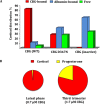Plasma steroid-binding proteins: primary gatekeepers of steroid hormone action
- PMID: 27113851
- PMCID: PMC5064763
- DOI: 10.1530/JOE-16-0070
Plasma steroid-binding proteins: primary gatekeepers of steroid hormone action
Abstract
Biologically active steroids are transported in the blood by albumin, sex hormone-binding globulin (SHBG), and corticosteroid-binding globulin (CBG). These plasma proteins also regulate the non-protein-bound or 'free' fractions of circulating steroid hormones that are considered to be biologically active; as such, they can be viewed as the 'primary gatekeepers of steroid action'. Albumin binds steroids with limited specificity and low affinity, but its high concentration in blood buffers major fluctuations in steroid concentrations and their free fractions. By contrast, SHBG and CBG play much more dynamic roles in controlling steroid access to target tissues and cells. They bind steroids with high (~nM) affinity and specificity, with SHBG binding androgens and estrogens and CBG binding glucocorticoids and progesterone. Both are glycoproteins that are structurally unrelated, and they function in different ways that extend beyond their transportation or buffering functions in the blood. Plasma SHBG and CBG production by the liver varies during development and different physiological or pathophysiological conditions, and abnormalities in the plasma levels of SHBG and CBG or their abilities to bind steroids are associated with a variety of pathologies. Understanding how the unique structures of SHBG and CBG determine their specialized functions, how changes in their plasma levels are controlled, and how they function outside the blood circulation provides insight into how they control the freedom of steroids to act in health and disease.
Keywords: albumin; corticosteroid-binding globulin; estradiol; glucocorticoids; progesterone; serine protease inhibitor; sex hormone-binding globulin; testosterone.
© 2016 Society for Endocrinology.
Figures

References
-
- Ahrentsen OD, Jensen HK, Johnsen SG. 1982. Sex-hormone-binding globulin deficiency. Lancet 2 377. - PubMed
-
- Bartalena L, Hammond GL, Farsetti A, Flink IL, Robbins J. 1993. Interleukin-6 inhibits corticosteroid-binding globulin synthesis by human hepatoblastoma-derived (hep G2) cells. Endocrinology 133 291–296. - PubMed
Publication types
MeSH terms
Substances
LinkOut - more resources
Full Text Sources
Other Literature Sources
Research Materials
Miscellaneous

